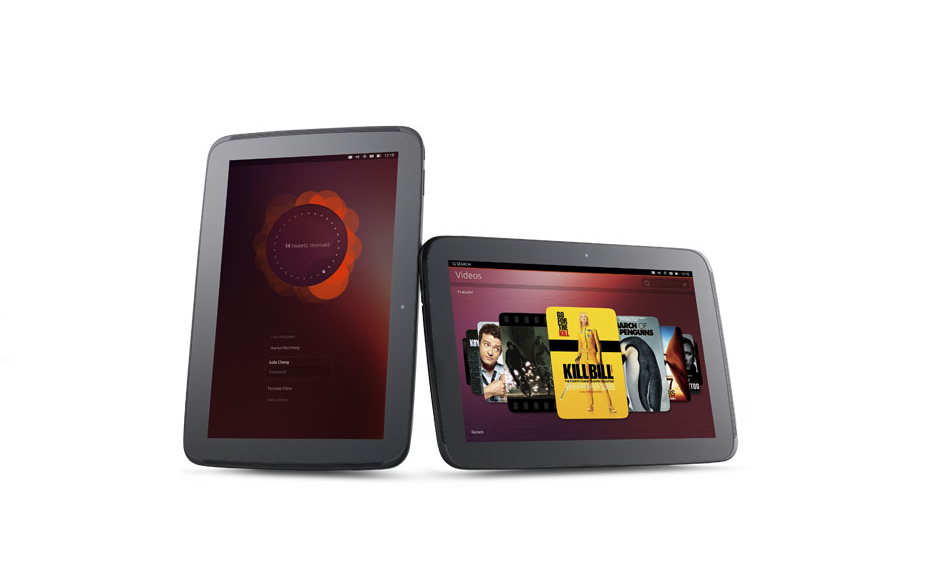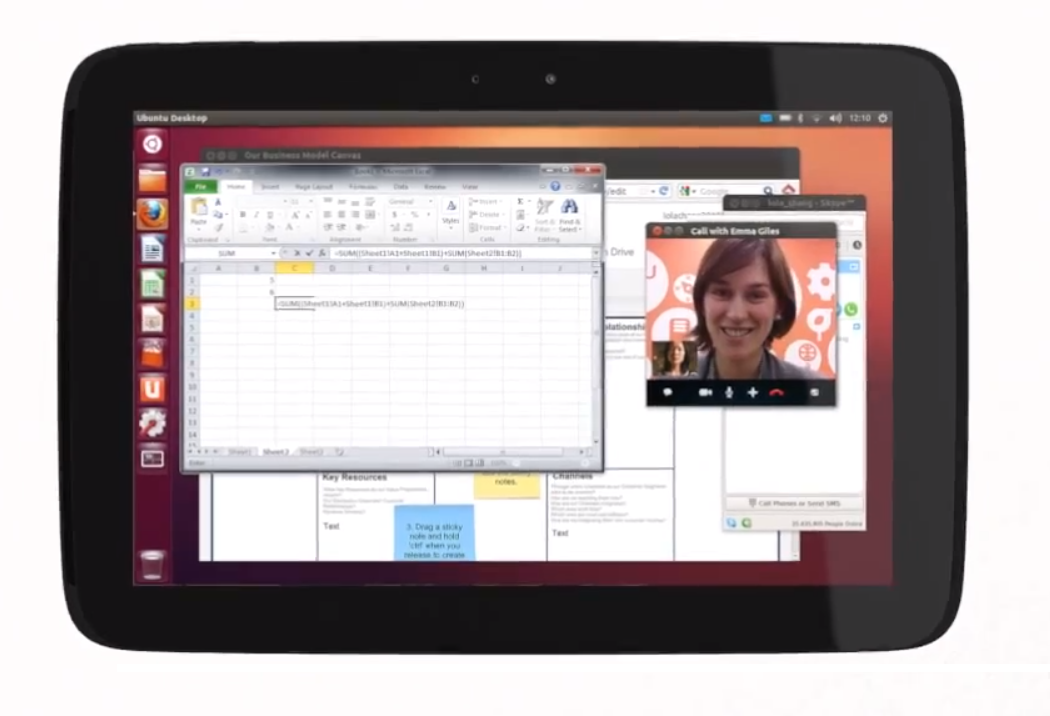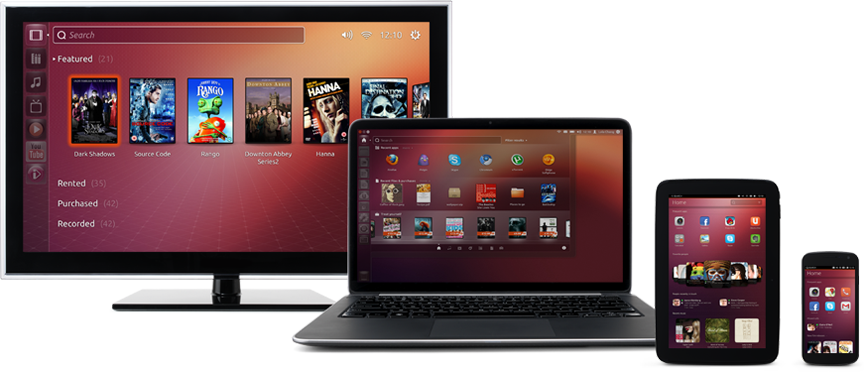Ubuntu OS on Nexus 10 review
A mobile OS which scales up to the full desktop. But does the beta work?

Canonical has worked hard to make an interface which scales from mobiles through to desktops. The beta works well, but it remains to be seen which vendors will bring devices to market.
-
+
Scales from a mobile UI to full-blown desktop OS; Open source and free; Great effort for first beta
-
-
Just a handful of apps; Doesn't currently support dual-booting with Android; Limited number of devices it can be used on
Canonical has made superficial changes to its Ubuntu operating system over the last two years, optimising it for touchscreen devices. This work has culminated in the release of the Ubuntu OS Developer Preview for smartphones and tablets.
But with Apple, Google and Microsoft dominating the operating system landscape, does the Ubuntu OS have anything unique going for it? The answer is yes.
Canonical's OS looks to be the first fully fledged operating system capable of bridging the gap between the mobile and desktop world.
Perhaps the most eye-catching feature of Ubuntu OS is the ability to run the full-blow desktop Linux operating system when docked. Users can access full-fat, mature applications such as LibreOffice, Mozilla's Thunderbird as well as full-blown editions of Google Chrome and Mozilla Firefox. This can possibly save businesses money as they will not need to buy multiple devices/licenses.
So does it actually work?
Installation
Canonical has made its Developer Preview officially available to use on a handful of Android devices. These include the Nexus 4 smartphone, Nexus 7 and Nexus 10 tablets, along with the slightly older Galaxy Nexus handset. The primary reason Canonical has chosen to show off its upcoming operating system on the Nexus family is because the bootloader is easily unlockable.
However, there is nothing to stop tech savy users from installing the OS on any other Android device which has its bootloader unshackled. Be warned though not all hardware functions will be supported unless a Nexus-branded device is used.
Installing Ubuntu isn't straightforward. It's not possible to dual-boot the OS alongside Android, so users will have to wipe their chosen device and carry out a fresh install. Canonical recommends that only developers and enthusiasts download this beta version.

IT Pro tested the Ubuntu operating system on the Nexus 10 tablet, because it has high-end specs and sits in between mobiles and desktops.
The tablet features a dual-core ARM Cortex A15 chip and 2GB RAM. The RAM is arguably the most important technical specification when looking at running a full-blown operating system on a tablet.
When running on the Nexus 10's 2560 x 1600 10in display, the firm's Unity interface is nothing short of stunning. The icons render beautifully and the smooth transitions look more like Mac OS X than a half-baked Linux distribution.
We also like the ability to multitask. Facebook and Twitter apps appear on one side of the screen while other applications such as a web browser or video player can carry on being used on the other half.
As the Ubuntu OS is still in beta form, users should expect bugs and performance issues. We experienced an occasional lag when running two applications on screen concurrently, but nothing major which rendered the OS unusable.
Unity interface
Canonical has unified its interface across PCs, smartphones and tablets in a strategy completely opposite to other established platforms such as Windows or Mac OS X.
Microsoft launched Windows 8 with a Jekyll and Hyde personality, pushing users between two distinct and disjointed interfaces (Live Tiles and Desktop). Redmond also has a separate Windows Phone 8 platform for mobile devices. Meanwhile, Apple has a similar approach offer Mac OS X for desktops/laptops and iOS on smartphones and tablets.
In contrast, Ubuntu aims to offer consisitency across multiple form factors by using one scalable interface.

Existing Unity users will find the interface on Ubuntu OS familar. The icon bar remains, and the Dash has been tweaked to resemble a carousel with five tabs. This provides access to common tasks including Music, Contacts, Movies and installed apps. Users coming from the Android or iOS landscape will need to get used to having this Windows or Mac OS X style icon toolbar but on the whole the interface is intuitive and the learning curve is shallow.
Canonical has worked hard on Ubuntu's user interface. Unity makes extensive use of horizontal swiping to navigate - similar to the system used on BB10. But at this moment in time the Ubuntu OS doesn't feel quite as polished as the BlackBerry platform.
Get the ITPro daily newsletter
Sign up today and you will receive a free copy of our Future Focus 2025 report - the leading guidance on AI, cybersecurity and other IT challenges as per 700+ senior executives
-
 ‘Phishing kits are a force multiplier': Cheap cyber crime kits can be bought on the dark web for less than $25 – and experts warn it’s lowering the barrier of entry for amateur hackers
‘Phishing kits are a force multiplier': Cheap cyber crime kits can be bought on the dark web for less than $25 – and experts warn it’s lowering the barrier of entry for amateur hackersNews Research from NordVPN shows phishing kits are now widely available on the dark web and via messaging apps like Telegram, and are often selling for less than $25.
By Emma Woollacott Published
-
 Redis unveils new tools for developers working on AI applications
Redis unveils new tools for developers working on AI applicationsNews Redis has announced new tools aimed at making it easier for AI developers to build applications and optimize large language model (LLM) outputs.
By Ross Kelly Published
-
 Google layoffs continue with "hundreds" cut from Chrome, Android, and Pixel teams
Google layoffs continue with "hundreds" cut from Chrome, Android, and Pixel teamsNews The tech giant's efficiency drive enters a third year with devices teams the latest target
By Bobby Hellard Published